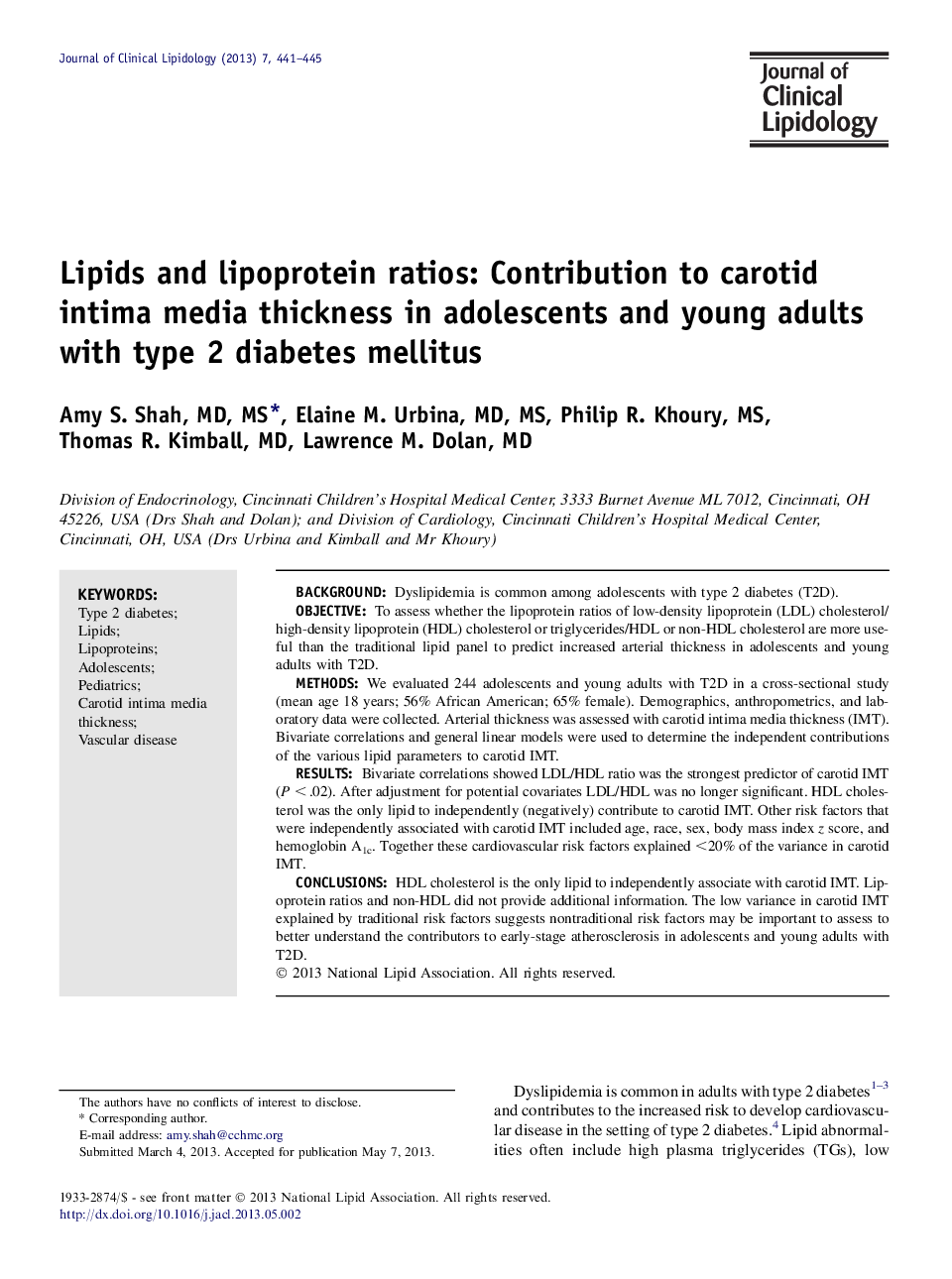| Article ID | Journal | Published Year | Pages | File Type |
|---|---|---|---|---|
| 5986085 | Journal of Clinical Lipidology | 2013 | 5 Pages |
âºHDL-C is the only lipid to independently associate with carotid IMT.âºLipoprotein ratios and non-HDL did not add to the prediction of carotid IMT.âºLess than 20% of the variance in carotid IMT is explained by traditional CV risk factors.âºNontraditional risk factors may be important to understand early atherosclerosis.
BackgroundDyslipidemia is common among adolescents with type 2 diabetes (T2D).ObjectiveTo assess whether the lipoprotein ratios of low-density lipoprotein (LDL) cholesterol/high-density lipoprotein (HDL) cholesterol or triglycerides/HDL or non-HDL cholesterol are more useful than the traditional lipid panel to predict increased arterial thickness in adolescents and young adults with T2D.MethodsWe evaluated 244 adolescents and young adults with T2D in a cross-sectional study (mean age 18Â years; 56% African American; 65% female). Demographics, anthropometrics, and laboratory data were collected. Arterial thickness was assessed with carotid intima media thickness (IMT). Bivariate correlations and general linear models were used to determine the independent contributions of the various lipid parameters to carotid IMT.ResultsBivariate correlations showed LDL/HDL ratio was the strongest predictor of carotid IMT (PÂ <Â .02). After adjustment for potential covariates LDL/HDL was no longer significant. HDL cholesterol was the only lipid to independently (negatively) contribute to carotid IMT. Other risk factors that were independently associated with carotid IMT included age, race, sex, body mass index z score, and hemoglobin A1c. Together these cardiovascular risk factors explained <20% of the variance in carotid IMT.ConclusionsHDL cholesterol is the only lipid to independently associate with carotid IMT. Lipoprotein ratios and non-HDL did not provide additional information. The low variance in carotid IMT explained by traditional risk factors suggests nontraditional risk factors may be important to assess to better understand the contributors to early-stage atherosclerosis in adolescents and young adults with T2D.
